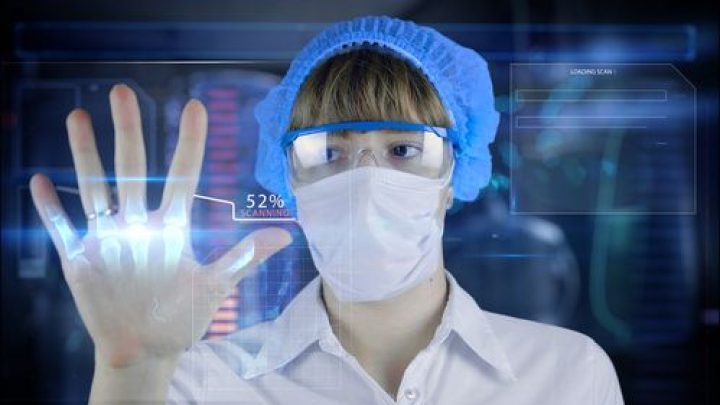
Is Microsoft’s HoloLens Taking Medicine To The Next Level?
HoloLens is the new augmented reality device created by Microsoft, which finally hit the shelves earlier this month, unfortunately in a limited amount only for business users. The price is $3,000, and the company does not have any immediate plans to offer the product the general public.
The device is capable of making objects appear in front and around you. If virtual reality takes you into a fantasy land, while blocking the real world, augmented reality blends the physical and digital realms and places virtual objects into the world around you.
How does HoloLens work?
The headset has several cameras built into it. Two of them and an infrared sensor are used to create a 3D model of the world around you. The difference between the HoloLens and other VR sets is that it’s self-sufficient (has a built-in computer with Windows 10) and completely wireless. You are free to walk around the room without having to rely on external tracking cameras or to be tethered to a computer.
The cameras are so accurate that they track your hands allowing you to reach out and interact with objects or use gesture-based controls. The holograms are created using a mini computer that is fit with lenses, projectors, motion sensors and speakers.
Can HoloLens revolutionize the healthcare industry?
Students will have access to 3D learning
First things first. HoloLens can be successfully used by medicine students who are currently practicing o cadavers. Gross anatomy is one of the most challenging courses and using an overlay of the human body on the cadaver can help students see each nerve that can be damaged or cut during a procedure and the adjacent organs and other important parts.
They can even learn about the human body without having to cut open a cadaver. With a 3D model of the human body students can separate it into different parts and examine them closely. If all the students in a group wear the HoloLens, they will be able to interact with the same model, therefore sharing their experience and ideas. They will also be able to practice very difficult procedures and know what they have to do when they would have to perform them in real life.
Patients will be more informed
Physicians will be able to show patients all the details of a complicated procedure. Therefore the patient will be engaged and will completely understand how the procedure will be performed. Thanks to visuals, these holograms will clarify things that the complex medical terminology will fail to do. HoloLens can be used for virtual care, interactive examinations, medical modeling and telemedicine.
The next level in radiology and surgery
Robot-assisted surgery has already taken healthcare to the next level. Thanks to The da Vinci Surgical System, The ZEUS Robotic Surgical System, The Socrates Robotic Telecollaboration system or the CyberKnife Robotic Radiosurgery System have already made surgery safer, more precise, minimally invasive, increasing the success rate and making the healing process easier and faster.
But with Hololens physicians could have access to important information while performing the procedures. Imagine how it would be to have access to the MRI data during the surgery. Yes, virtual reality can do this too, but devices such as the Oculus Rift need input to a computer and wires for power. By overlaying the MRI onto the patient while performing the procedure will give the surgeon constant feed of visual information that could make removing a tumor much easier and safer.
HoloLens could also be used to the extent of enabling drones on the ground, while the operators are thousands of miles away. Medical professionals will be able to address real problems or even help bedridden patients or those with mobility issues.
The 21st century has lead to amazing technological advancements which are used in healthcare to connect medical professionals with their patients, improve the execution of procedures and spread valuable information in a fraction of a second.
These are only some of the ways in which HoloLens could be integrated and applied in medicine, but it’s up to developers and physicians to come up with even more innovative and interesting uses. It will not be long until we are able to see this technology introduced in modern clinics and hospitals in the US and the world.
Categories: Medical Technology, Medical Tourism
